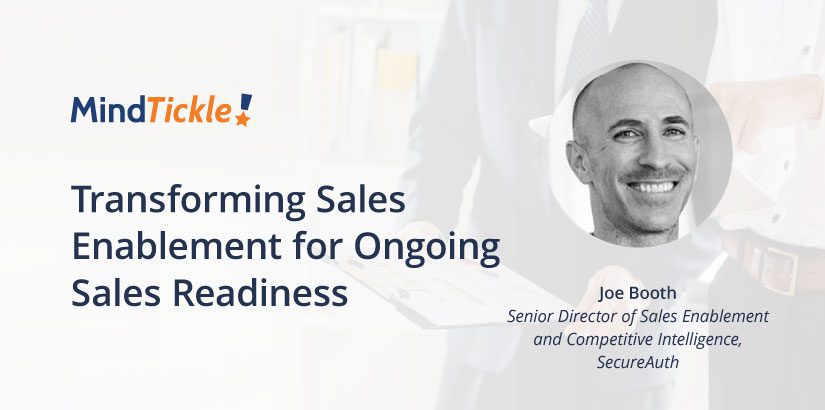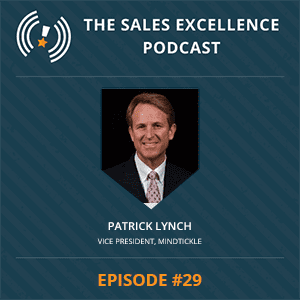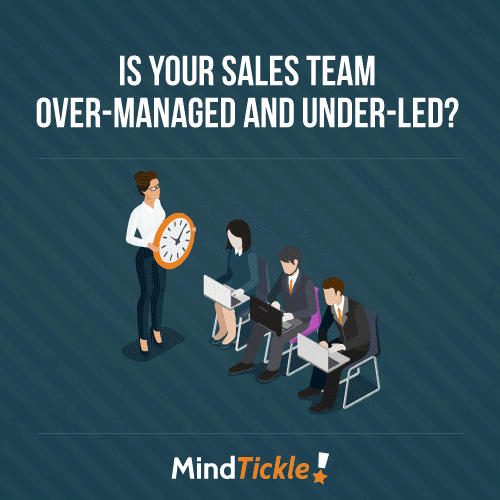As the pressure of digitization on sales functions has ratcheted up in the past couple of years, companies are taking another look at modernizing sales enablement – for good reason. Among them:
Selling is getting harder.
Fewer reps are hitting their quotas. According to a recent article by Forbes, 57% of sales reps missed their quotas in the last year – concluding overall that what’s truly hindering sales’ success is the lack of cohesion between departments and the way new sellers are being introduced to the product.
Onboarding is taking longer.
With today’s complex product lines and ever-changing business models, it can take as much as nine months to ramp up new reps.
Buyers are bypassing sales for the information they need.
Customers often complete as much as 70 percent of their journey from their own research, according to industry estimates.
Faced with these challenges, companies are increasingly seeing sales enablement as a strategic imperative that’s vital the sales organizations success. The stage is set for a new kind of sales enablement. For hard-pressed sales organizations, it can’t come soon enough.
What is sales enablement?
Sales enablement is a catch-all phrase with many meanings. But more importantly, what is its purpose?
The idea of training new sales reps, or any other customer-facing employees, to align their objectives with the company’s goals and gain insight to be successful is not a new concept. Knowledge of product(s), brand, and the competitive landscape is imperative to their quickly becoming effective. In the search for continued revenue growth, companies have sought to better equip and prepare those on the front lines of revenue generation: sales teams.
The goal has been, and continues to be, to enable them to reach quota as quickly as possible and consistently, thus the creation of sales enablement. However, as the state of sales enablement constantly changes in scope, it’s needless to say that there’s yet to be a single, universally adopted definition.
Here are a few takes:
- Search Google and you’ll find, “modern sales enablement is the enablement of sales teams with information, tools, and content that help salespeople sell more effectively.” A more visionary definition of sales enablement from SiriusDecisions explains, “Enablement’s purpose is to ensure salespeople have the skills, knowledge, behaviors, and tools needed to engage [buyers, team, other] in rich conversations.”
- Forrester Research says, “Sales enablement is a strategic, ongoing process that equips all client-facing employees with the ability to consistently and systematically have a valuable conversation with the right set of customer stakeholders at each stage of the customer’s problem-solving life cycle to optimize the return on investment of the selling system.”
When Forrester Research asks, “What is sales enablement?” they characterize it with the idea that companies should put their customers upfront. Putting customers first is an excellent approach to creating your sales enablement initiatives. That said, it’s just as important to determine whether your business needs a dedicated sales enablement manager, a big decision for any company.
No matter its current definitions, sales enablement has come a long way in the last five years towards helping sales teams perform better. Reps today are more comfortable in competitive environments, as well as those which sometimes require more complex strategic sales motions.
At the same time, engaging with today’s highly informed and ever-more scrutinizing customers requires salespeople to retain and effectively use ever-more knowledge, skills, and behaviors.
While sales enablement is designed to help sales turn more opportunities into revenue, most traditional sales enablement solutions cannot show how programs correlate to individual outcomes.
What most don’t realize is that there are huge, previously untouched areas where enablement solutions (tools, platforms, and best practice methodologies) can bring more value and revenue to companies.
What Gartner has to say about sales enablement
Companies, both purposefully and accidentally, are missing some useful and obvious strategies. This short-sightedness also applies to sales consultants and training or learning tools vendors –all of whom have implemented or offered otherwise great technology for sales enablement. Let’s take a look at some numbers behind these pain points. Here are some key statistics Gartner recently shared at their conference about the complex reality of most salespeople today:
- Customers are more complex: over 6 people are typically involved in B2B purchases with over 3 different functions represented.
- Product complexity: the product portfolio that sellers represent have increased in size by 2.3 times, and only 37% of sellers find it easy to customize their offerings.
- Internal complexity: sellers have reported that 16.4% of the sales cycle is spent on internal approvals and only 24% of sellers can easily calculate their variable compensation.
What the figures above tell is a story of increased difficulty and complexity for the salesperson in your average B2B company. Now add the picture above with the new reality of how salespeople develop their skills, according to Gartner:
- 58% of sellers develop their skills through their colleagues
- 35% of skills sellers use today were acquired in the last year
- 66% of sellers expect most learning and development to occur outside the classroom
- 60% of sellers expect to learn and develop just-in-time
Traditional training programs and methods are falling short of the expectations and needs of sellers today and leaving much to be desired. The facts presented by Gartner point in a few different directions as well:
- Managers are more than ever required to be involved and help drive sales learning and coaching
- Onboarding programs have to adapt to the new realities of today’s sellers and better enable them to help buyers during their journeys
- Manager enablement is a critical need to help managers have better conversations, give feedback, identify seller skills gaps, and have career conversations with their reps
Most sales enablement teams would agree that the biggest problem or obstacle they face when rolling out programs is getting managers to spend time with their sellers and with the programs.
The key takeaway? Working with managers to show the impact that their actions can have in sales performance is one of the most important action items in your next sales enablement playbook.
If you have a platform that allows you to measure your sales team’s “readiness” and you can show managers the skill gaps identified through the different initiatives rolled out, you’ll have a much easier conversation when it comes to implementation of a new sales enablement strategy. Regardless of technology, the first step is changing the frontline managers’ mindsets and presenting them with a strong case for enablement.
What modernizing sales enablement programs can do for you
The goal of modern sales enablement is straightforward: to help you and your team win more and bigger deals.
“Sales enablement optimizes the selling motion in order to increase pipeline, move opportunities forward and win bigger deals more efficiently to drive profitable growth.” – Sales Enablement Society
It helps achieve that goal through three its three core capabilities. In short, sales enablement:
- Helps sellers build out skill sets to deliver phenomenal customer experience. It personalizes, gamifies, coaches, and provides micro-learning modules to deliver resonant and memorable experiences that help sellers master and operationalize new skills.
- Combines a modern enablement platform with best-practice methodologies. Sellers need a digital solution that they can access anytime, on any device. Modern platforms’ design is informed with industry-leading insights on how acquired skills translate into revenue production and customer engagement.
- Shows the connection between actions and outcomes. Modern sales enablement platforms harness artificial intelligence and data-driven analytics so you can see how your programs are improving sellers’ capabilities. You can identify knowledge gaps where you might want to do some coaching. The platform provides a clear picture of how sales capabilities impact sales performance and business outcomes.
So without further ado, here are the top five reasons you should consider modernizing your sales readiness programs.
1. Business is in a high growth phase
Many businesses experiencing high-growth tend to deal with business challenges that are right in front of them. Usually when business is booming it’s easy to forget about the longer term future. This short-sightedness can cause major headaches down the road, particularly when there are no streamlined processes in place to track personal or business performance.
Referring to an HBR blog Science of Building a Scalable Sales Team, Mark Roberge from Hubspot points out the importance of taking a disciplined approach when training salespeople so that everyone has good foundational selling skills. According to Mark the result at Hubspot stated that “our salespeople are able to connect on a far deeper level with our prospects and leads”, a process that has consistently resulted in high growth.
2. New sales reps take a long time to meet quotas
Hiring new sales reps is a significant investment for any company, and the longer they take to onboard and ramp up, the more money burned.
“According to Aberdeen Research, companies that adopt best practices across their sales teams had double the quota attainment of their peers. Each sales enablement program that gives a rep more time for core selling nets more revenue. Each best practice program that makes reps more effective translates into topline improvement”.
Modernizing sales readiness programs will help each member of the sales team achieve peak performance. Therefore, sales enablement programs should always include finding ways to improve sales reps’ efficiency and effectiveness with prospects so they can meet their quotas and keep on performing into the future.
3. Sales reps spend too much time on non-selling tasks
The primary job of any sales rep is to continually work on their sales process, generating and qualifying leads, conducting sales demos and closing deals. If Anytime they’re not on these selling tasks it’s usually unproductive, and a poor use of a valuable resource.
“To increase sales productivity, you have to reduce or eliminate tasks that aren’t productive.”- Nancy Nardin
Modernizing the sales readiness programs with a data driven sales enablement platform will help your organization have vision into the sales process and identify how it can help reduce non-selling tasks and increase efficiency across the entire process.
4. Need to increase individual sales quotas next year
According to CSO Insights, 94.5% of firms they surveyed said they were raising quotas. If you too are planning to increase quotas, then you’re going to need a new strategy and a new set of sales enablement tools to get more out of your sales team. A dedicated sales enablement manager should help to ensure that your sales reps be well trained regarding your customers’ needs, be up to date with industry and product news, have the necessary tools and information available with them when they need it. As CSO Insights discovered.
As CSO Insights discovered that the key to achieving higher quotas with the same sales team is to keep your sales team well trained and ready with a new set of skill.
5. Marketing efforts aren’t helping sales sell
If you are increasing your marketing budgets but that’s not translating into helping sales sell more, then having a sales enablement manager could be the reason. A significant part of marketing’s role is to create sales collateral for each persona for every stage of the buyer’s journey, so, it’s crucial that both sales and marketing are aligned and work closely together.
A sales enablement manager can help bridge the gap between marketing deliverables and what the sales team needs. Working with both sales and marketing can make a difference in sales ability to provide valuable content and collateral to customers. For example, the HubSpot sales enablement team sits with the sales reps but reports through to the marketing.
Why change?
To sum up, moving in a direction of a revamped, modernized sales enablement program has the potential to completely turn things around when it comes to your team and their sales readiness. A comprehensive and collaborative approach to sales enablement just might be that secret ingredient when it comes to revamping the way your organization tackles – and wins – sales deals.
Ultimately, here’s what a modern sales enablement platform do for your organization:
- Accelerate and enhance onboarding to telescope time-to-productivity
- Coach sellers in the exact areas where they need help
- Energize your meetings and kickoffs to propel profitability
- Build sellers’ confidence and effectiveness through guided role-play
- Track and accelerate business outcomes through reporting and analytics
- Build reps’ skills through tailored, highly engaging learning and development activities
- Help sales leaders to make their skills go viral, company-wide.













